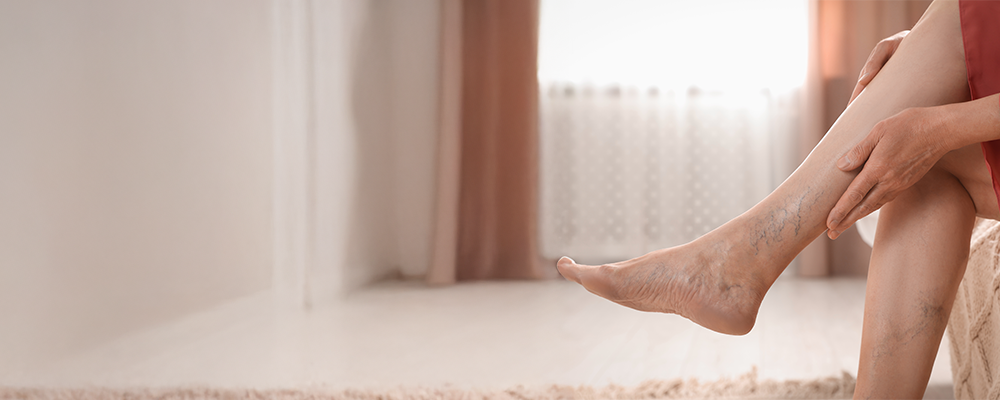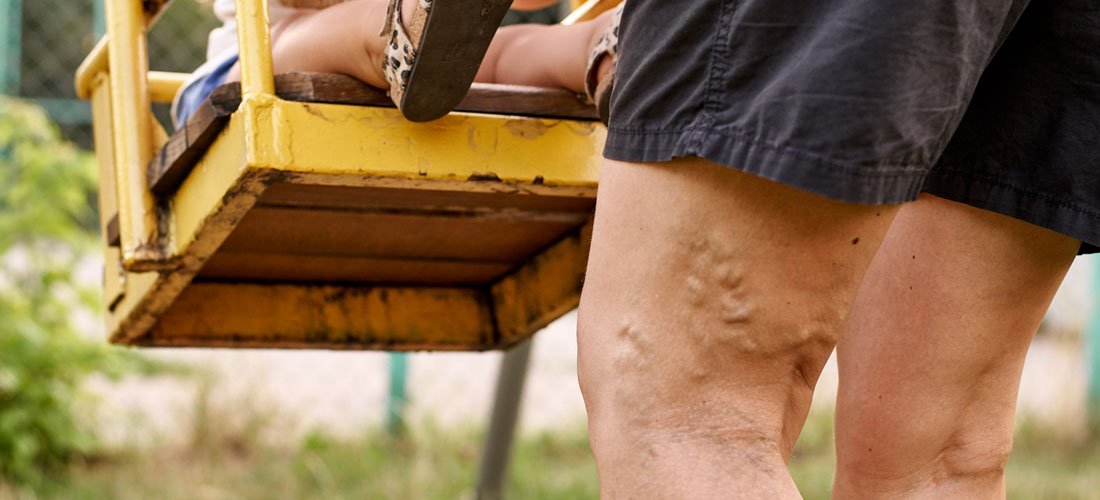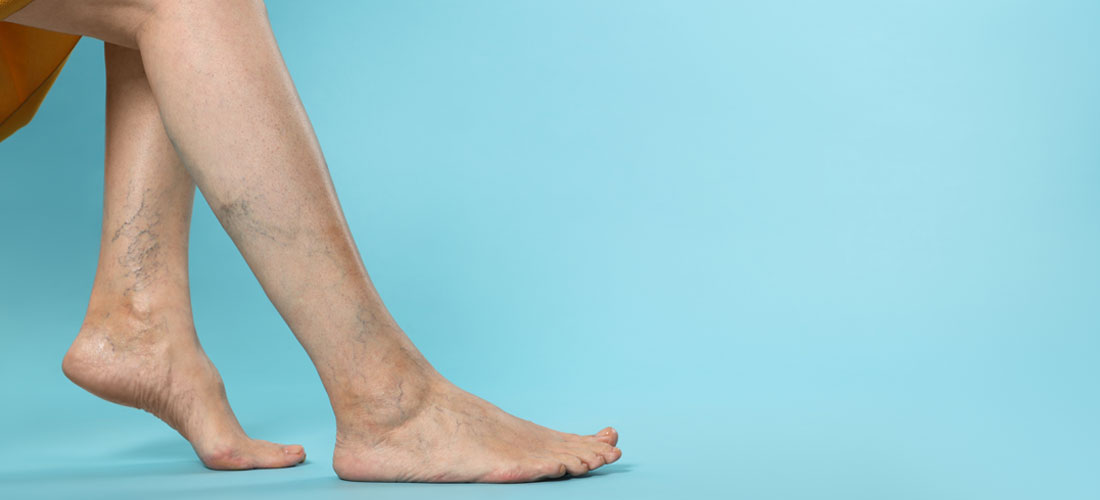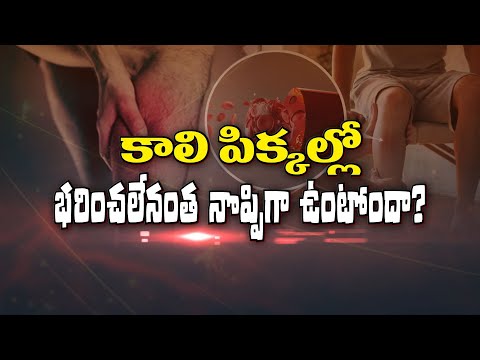Varicose Veins
Varicose veins are enlarged, twisted veins that often appear just beneath the skin’s surface. They are usually blue or purple and most commonly affect the legs, ankles, or feet. These veins can look like bulging, rope-like cords and may cause discomfort, itching, or heaviness in the legs.
Smaller, red or blue lines that lie closer to the surface of the skin are often found alongside varicose veins. These are called spider veins. While varicose veins are usually not harmful, in some cases they can lead to more serious conditions such as skin ulcers or blood clots. Varicose veins affect a significant number of people and tend to become more noticeable with age.
Common symptoms of Varicose veins
Varicose veins may not always cause pain, but many people notice certain symptoms, including:
Visible bulging veins: Twisted and swollen veins that are easily seen through the skin, particularly on the legs and ankles.
Leg heaviness or fatigue: Heaviness, tiredness, or muscle fatigue in the legs, especially after standing or physical activity.
Itching or irritation: The skin around the veins may become itchy or irritated.
Aching or soreness: Some people experience pain, cramping, or aching in the legs, commonly behind the knees or in the calves.
Swelling: The feet, ankles, or lower legs may swell, especially after long periods of sitting or standing.
Skin changes or ulcers: If left untreated, the skin over the affected veins may become discolored or develop sores, especially near the ankles.
These symptoms can worsen over time and may interfere with daily activities if not addressed.
Causes
Varicose veins develop when vein walls weaken and the valves inside them stop working properly. When these valves fail, blood can collect in the vein, causing it to stretch and swell. Several factors can contribute to the weakening of vein walls and valves, including:
- Natural aging: As we age, veins can lose their elasticity and become less efficient at moving blood.
- Prolonged standing or sitting: Occupations or habits that involve staying in the same position for long periods can affect blood flow and put extra pressure on the veins.
- Hormonal changes: Fluctuations in hormones—especially in women during pregnancy, menstruation, or menopause—can relax the vein walls.
- Excess weight: Carrying extra body weight increases pressure on leg veins and may contribute to valve failure.
Risk Factors
Varicose veins can affect anyone, but certain risk factors can make them more likely to develop:
- Age: The risk increases as you get older due to wear and tear on the veins and valves.
- Gender: Women are more likely to develop varicose veins, often due to hormonal changes associated with pregnancy, birth control, or menopause.
- Family history: If other family members have varicose veins, your chances may be higher due to inherited vein weakness.
- Lifestyle habits: Jobs that require prolonged standing or sitting can reduce blood circulation and strain the veins.
- Underlying health conditions: Some medical issues, like chronic constipation or circulation disorders, can add pressure to the veins.
- Smoking: Tobacco use can damage blood vessels and impair circulation, raising the risk of vein problems.
- Obesity: Extra weight increases pressure in the leg veins, making valve function more difficult.
Diagnosis
Because varicose veins lie close to the surface of the skin, they are often visible and can usually be diagnosed during a physical examination. Your healthcare provider will examine your legs while you’re standing and sitting. They may also gently press along the vein to check for tenderness or swelling, and ask about your symptoms and personal or family medical history.
In most cases, a clinical exam is enough to confirm the diagnosis. However, your doctor may recommend a duplex ultrasound if further evaluation is needed. This non-invasive test uses two types of ultrasound technology to:
- Visualize the structure of your leg veins
- Assess how well blood is flowing through them
- Detect any signs of valve dysfunction or blood clots
The test is painless, uses no radiation, and provides a clear image of what’s happening beneath the surface.
Treatment Options
While varicose veins can’t be permanently cured, several treatments are available to manage the symptoms and improve the appearance of your legs. Many of these procedures are minimally invasive and performed on an outpatient basis—meaning you can go home the same day.
1. Lifestyle & Home Care
Leg Elevation: Raising your legs above heart level a few times a day can help reduce pressure in the veins and improve circulation.
Compression Stockings: Specially designed elastic stockings gently squeeze the legs, supporting the veins and reducing discomfort. They can prevent the condition from worsening.
2. Minimally Invasive Procedures
VenaSeal™ (Glue Ablation)
A medical-grade adhesive is delivered through a tiny catheter to seal the faulty vein, no heat, tumescent anesthesia, or sutures required. You can walk out in under an hour.
Sclerotherapy
A safe solution is injected into smaller varicose or spider veins, causing them to close and fade away over time. Often used for cosmetic concerns and minor symptoms.
Perforator Ablation
For deeper, malfunctioning veins contributing to swelling or skin changes, we use targeted thermal or chemical energy to close them from the inside.
3. Surgical Treatment
Ligation and Stripping: In some cases, surgical removal may be recommended. The surgeon ties off (ligates) the affected vein and may remove (strip) it to prevent recurrence. Surgery is now less commonly needed due to the success of less invasive options.
Why Choose Minimally Invasive Treatments?
Minimally invasive treatments offer a safer, more efficient alternative to traditional vein surgery. Techniques such as endovenous ablation, VenaSeal™, and sclerotherapy are performed through small needle punctures—without the need for general anesthesia, stitches, or large incisions. These procedures significantly reduce the risk of complications, cause minimal discomfort, and allow for faster recovery. Most patients resume daily activities within 24–48 hours, with excellent long-term outcomes in both symptom relief and cosmetic appearance.
Why Choose Rivea For Vein Treatment?
RIVEA is India’s leading center dedicated exclusively to vascular, endovascular, and interventional radiology care. Our vein treatments are led by Dr. Karthik Mikkineni, an American Board of Surgery–certified vascular surgeon with specialized expertise in advanced, image-guided therapies for venous disease. We combine clinical authority with cutting-edge technology to deliver safe, effective, and individualized treatment plans.
At RIVEA, you benefit from:
- Board-Certified Expertise – Treatment by American-board certified vascular specialists
- Advanced Imaging Capabilities – High-resolution ultrasound and diagnostic tools for precise treatment planning
- Tailored Treatment Plans – Care based on your unique vein anatomy and symptom severity
- Minimally Invasive Procedures – Reduced discomfort, no hospital stay, and minimal downtime
- Proven Outcomes – Long-term relief from symptoms such as leg pain, swelling, and heaviness, with improved appearance
Our Team
-
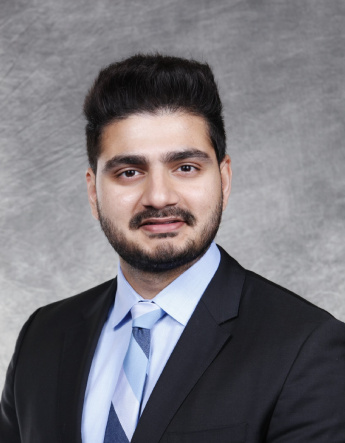
Dr. Karthik Mikkineni
MD, FACS, FSVS, RPVI
Dr. Karthik Mikkineni is an internationally recognized vascular and endovascular surgeon, known for his pioneering work in complex aortic interventions, limb salvage, and carotid disease management.
View Profile Book an Appointment

